Here’s another example of the digital divide, geographical edition, with bonus points for how giant digital companies can be awful.
The state of Vermont is very rural. Most inhabitants find mobile phone coverage to be spotty, if not just bad. In contrast, cell phone carrier services – Verizon, AT&T, etc. – have recently declared Vermont to be pretty well covered, thank you very much.
To resolve this contradiction, a state Department of Public Service employee decided to map the state’s actual cell phone coverage. He drove to every single town, testing signal strength with a box of phones, each tuned to a different carrier.
Once this epic road trip was done, he crunched the data, then turned it into a very slick map.
The results confirm folk wisdom, as well as my research into the digital divide. The most populated urban areas have good coverage. For example, the Burlington area, population around 45,000:
Compare with Montpelier, the state capital, population around 7,500:
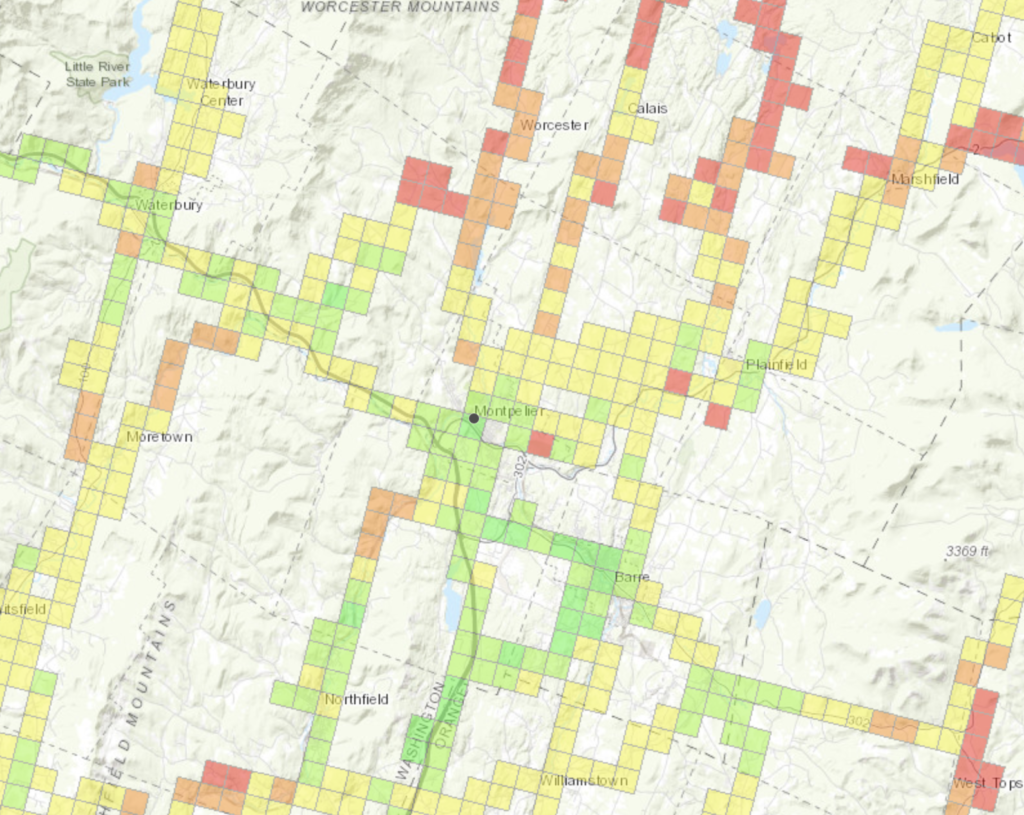
Some pleasing squares of green, then yellow, then sad orange and fiery red not too far away.
Compare with central Vermont, which lacks any cities, except for a few wealthy towns, like Middlebury:
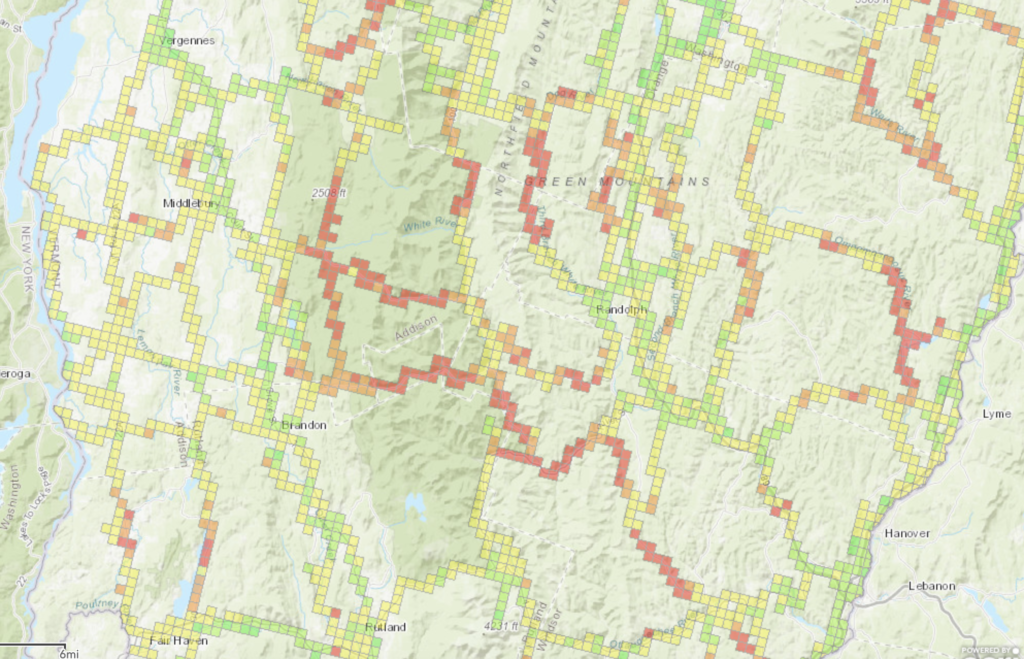
Some patches of green, some lines of yellow, and big lanes of red.
Similar patterns occur on the state’s southern edge, with a couple of bigger towns – Brattleboro, Bennington – separated by low mountains:
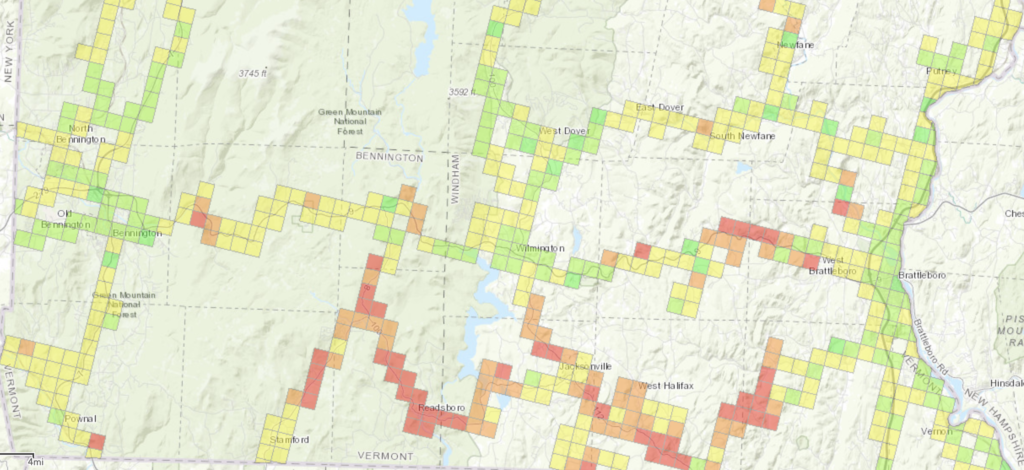
In other words, Vermont has very uneven cell service, ranging from decent to basic to nothing at all.
Why does this matter? A few observations:
- Rural areas are underserved, again. The digital divide persists along this access.
- Using cell service to make up for bad internet connections is not a universally available option.
- The cell carriers are not trustworthy on this score.
- We may need better data on the reality of connectivity.
(thanks to the Reddit Vermont and Metafilter discussants)

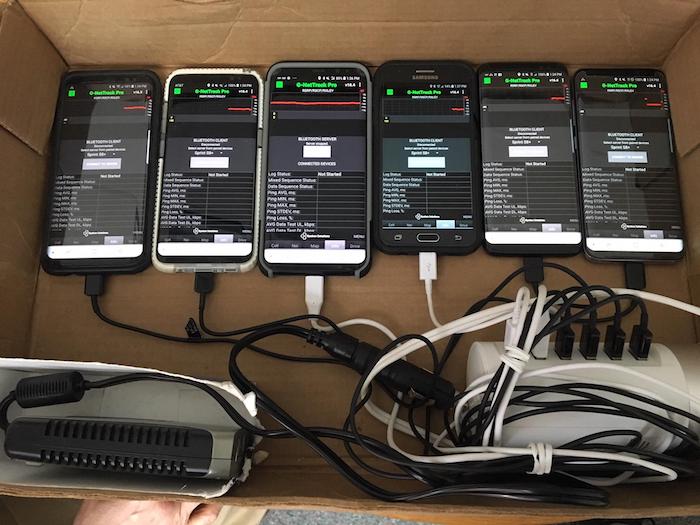
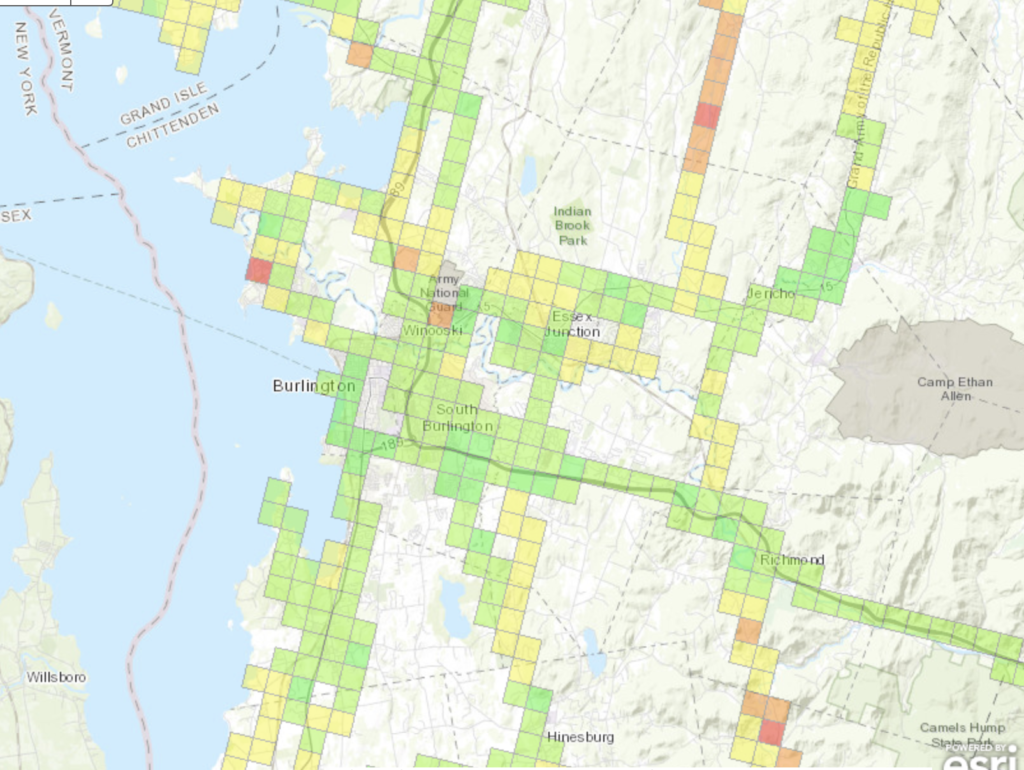




Bryan,
Does rural connectivity also reduce accessibility to online or hybrid education? If so, can that be a motivator for more young adults to leave rural areas?
It does, and it does indeed.
Bryan
Did you compare the Public Service Employee’s map to Root Metrics map for the same area(s)? (www.rootmetrics.com )
Rural America is certainly undeserved for wireless broadband.
VT is a bit different as its government planning and zoning at the municipal level are infamously difficult for siting new towers.
The NIMBY factor affects both rural & suburban markets. CT, Westchester are examples of poor broadband in high pop areas.
Good idea, Anthony. Don’t have the time today. Mind if I ask the DPS people?
Agreed about towers and NIMBY. Ah, I remember talking with locals about Cape Wind.
Actually, from the reporting in your story you have better day on connectivity via mobile service (3/4G – but probably not 5G ;-)) at least for Vermont due to the heroic work of the Dept. of Public Service (+1 for the initiative and hard work there). The question is what impact will it have?
Is there a plan on the part of Dept. of P.S. to repeat the feat in some defined period of time (say six months to a year)? It might be a useful incentive if they at least stated their intention to do that, perhaps even publicly sending the bill to the carriers asking for reimbursement for the data collection THEY should have been doing so they can correct their erroneous coverage claims. They won’t in all likelihood get the reimbursement they deserve, but it would be a great publicity ploy and perhaps an ever so slight incentive on the part of the telcos to get off their duff and do the work the should have done already.
Actually you DO have the data in Vermont courtesy of the Dept. of Public Services. The staffer that did this work has laid out the reality that contrasts to the telcos BS. It would be interesting to corroborate it against the Root Metrics data, as Anthony suggests. But the method used by the DPS staffer seems pretty solid to me and measure on the ground the reality of lived experience. That should weigh strongly.
I suggest that you encourage the DPS folks to do the same mapping exercise in 6-12 months and bill the Telecos for the time and expense publicly. That should generate a comparison that either reflects improvements or not. At the very least it puts the telcos on notice that their ‘word’ is suspect and required validation. It also makes public the concern that the telcos claims are not being taken at face value by the state, with a very open and transparent method for confirming or refuting them.
Indeed, this sounds like a possible citizen science community project. If the DPS could build their data collection process into an app, make it freely available to the Vermont public, and then enourage people driving around in the state to periodically record their reception using it, sending the results to DPS… Wow!! This could become a grassroots movement! Just a thought.
Cheers,
Phil
Good thoughts, Phil. I asked Corey about redoing this down the road (ahem).